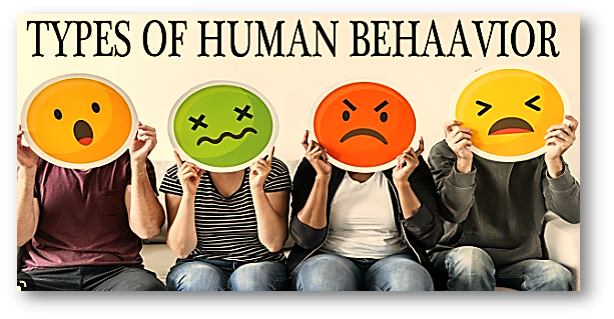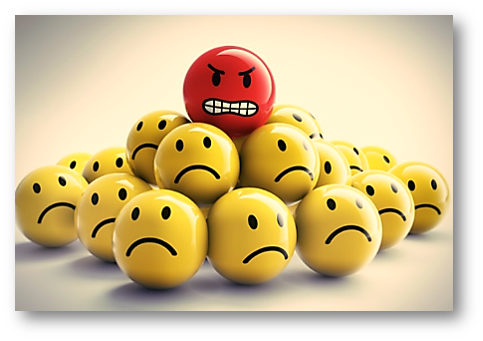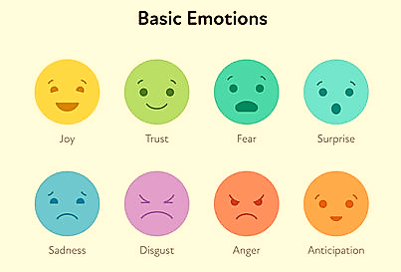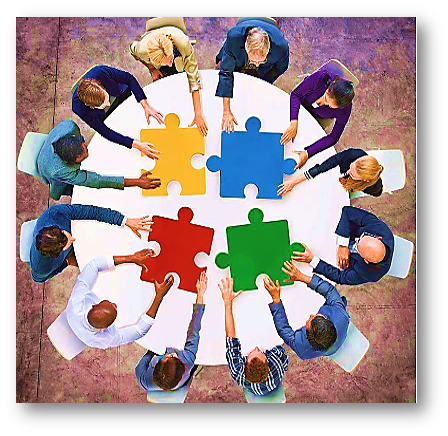WHAT IS MEANT BY BEHAVIOUR?
Behavior refers to the actions or reactions of an individual or group in response to certain stimuli or situations. It can refer to both observable actions, such as walking or talking, as well as internal responses, such as thoughts or emotions. Behavioral research is a broad field that encompasses many different disciplines, including psychology, sociology, and anthropology, and seeks to understand how and why people behave the way they do.
In psychology, It is often studied in relation to mental processes, such as cognition and emotion, and researchers may investigate how different factors, such as biology, environment, or culture, influence behavior. In sociology and anthropology, researchers may focus on how social structures and cultural norms shape it.
Additionally organizational and management study refers to how people act in their workplace and how they interact with others. And it is seen as a major key to understanding and improving the performance and effectiveness of individuals, groups, and organizations.
WHAT IS BEHAVIOURAL SCIENCE??
Behavioral science is an interdisciplinary field that encompasses many different disciplines, including psychology, sociology, anthropology, and economics. It is concerned with the study of human interactions, including how and why people think, feel, and act the way they do. Behavioral scientists use a variety of research methods, such as experiments, surveys, and observational studies, to gain insights into behavior, and they often seek to understand how different factors, such as biology, environment, and culture, influence it.
Behavioral science is a broad field that encompasses many different subfields, including:
Psychology:
The scientific study of the mind and behavior. This includes research on topics such as perception, memory, emotion, motivation, and personality.
Sociology:
The scientific study of society and social behavior. This includes research on topics such as social institutions, social inequality, and social change.
Anthropology:
The scientific study of human culture and societies. This includes research on topics such as cultural norms, beliefs, and practices.
Economics:
The study of how people make decisions, including how they use resources to satisfy their wants and needs.
Political Science:
The study of politics and government, including how political systems work, how political decisions are made, and how political behavior is shaped by individual and group psychology.
Marketing & Management:
Study of how to understand, predict and influence customer behavior to improve business performance.
The insights and findings of behavioral science research can be applied in many different fields to better understand and improve human behavior. Examples include developing interventions to reduce aggression and bullying in schools, creating more effective public health campaigns, and improving management and organizational effectiveness.
Behavioral Science can be studied as an undergraduate or postgraduate degree program at universities, and it’s becoming an increasingly popular field as there’s more and more emphasis on understanding human behavior and decision-making in organizations, government, and in society as a whole.
TYPES OF BEHAVIOURS!!

There are many different types of behavior that people can exhibit, and the specific types of behavior that are most commonly observed can depend on a variety of factors, such as the individual’s age, culture, and environment. Some common types of behavior that people may exhibit include:
Aggressive behavior:
This type involves actions or words that are intended to harm or intimidate others. Examples of aggressive behavior include physical violence, verbal abuse, and bullying.
Prosocial behavior:
This type involves actions that benefit others, such as helping, sharing, and cooperating. Examples of prosocial behavior include donating to charity, volunteering, and offering assistance to someone in need.
Impulsive behavior:
This type involves acting without thinking things through and is characterized by a lack of control over one’s actions. Examples of impulsive behavior include overeating, compulsive shopping, and substance abuse.
Conformist behavior:
This type involves going along with the actions or beliefs of others, even if the individual doesn’t agree with them. Examples of conformist behavior include following social norms, adhering to cultural expectations, and conforming to group pressure.
Altruistic behavior:
This type of behavior involves putting the needs of others before one’s own needs. Examples of altruistic behavior include selfless acts of kindness and generosity.
Self-centered behavior:
This type of behavior involves placing one’s own needs and desires above those of others. Examples of self-centered behavior include being selfish and egotistical.
Obsessive-Compulsive Behavior:
This type of behavior is characterized by persistent and excessive thoughts, feelings, or actions. Examples of this type of behavior include checking things repeatedly, counting, hand-washing excessively, etc.
These are just a few examples of the many types of behavior that people can exhibit. It’s important to note that behavior is complex and can vary greatly from person to person, and even within the same individual over time.
HOW CAN WE ADAPT ANY SPECIFIC BEHAVIOUR??

Adapting specific behavior often involves a process called behavior change, which can be achieved through a variety of different methods. Here are a few examples:
Cognitive-behavioral therapy (CBT):
This is a form of therapy that aims to change negative thoughts, beliefs, and attitudes that may be contributing to problematic behavior. By identifying and changing these cognitive distortions, individuals can learn to respond to situations in a more positive and adaptive way.
Habit formation:
Habits are automatic behaviors that are performed without much conscious thought. Habit formation involves creating a routine, and consistently repeating the behavior you want to adopt until it becomes automatic.
Social support:
Social support can be an effective way to change behavior. For example, people who quit smoking are more likely to be successful if they have the support of friends and family. Joining a group or community of like-minded people can also provide a sense of accountability and encouragement.
Positive reinforcement:
Positive reinforcement is a type of operant conditioning that involves providing rewards to increase the likelihood of a desired behavior. For example, giving someone praise or recognition for completing a task can increase the likelihood that they will complete similar tasks in the future.
Self-monitoring:
Self-monitoring involves keeping track of one’s own behavior over time. This can help individuals become more aware of their own behavior and patterns, and make adjustments as needed.
Modeling:
Modeling is when individuals learn by observing others. It involves observing the behavior of others who exhibit the desired behavior and then imitating that behavior.
It’s important to note that adapting behavior can be difficult and takes time and effort. People might not be successful the first time they try to change their behavior. It may take a few tries before they are successful. Also, it’s important to be patient with yourself and not get discouraged if progress is slow. A good attitude and a sense of self-compassion are important components of behavior change. Consultation with professionals or experts in the field can also be a great aid in achieving this goal.
WHAT IS BEHAVIOURAL REACTION??
Behavioral reaction refers to the observable actions or behaviors that an individual or group exhibits in response to certain stimuli or situations. It is a way to measure the effects of a particular intervention or manipulation on behavior. Behavioral reactions are often used in research studies to evaluate the effectiveness of treatment. OR to gain insights into the underlying processes that influence behavior.
Behavioral reactions can include both overt behaviors, such as talking or walking, as well as covert behaviors, such as thoughts or emotions. Researchers can use various methods to measure behavioral reactions, including observations, self-report measures, and physiological measures.
For example, in a study investigating the effects of a new medication on anxiety. The researchers might measure behavioral reactions such as changes in heart rate, sweating, or changes in reported symptoms of anxiety. Similarly, in a study investigating the effects of a new teaching method on student learning. The researchers might measure behavioral reactions such as changes in test scores, participation in class, or attention in class.
It’s important to note that measuring behavioral reactions is a crucial step in understanding the underlying causes of behavior and that it’s crucial that these measurements are taken in a valid and reliable way. Additionally, behavioral reactions can be influenced by a wide range of factors, such as previous experiences, genetics, and environmental context, so it’s important to consider these potential confounds in order to make valid conclusions about the relationship between the manipulation and the behavioral reaction.
WHAT ARE BEHAVIOURAL TRIGGERS??

Behavioral triggers are specific stimuli or situations that lead to a particular behavior. They can be thought of as the “cue” or “prompt” that initiates a specific behavior. Behavioral triggers can be both internal and external, and they can vary greatly from person to person.
External Triggers:
Examples of external behavioral triggers include:
Environmental cues:
For example, seeing the fridge might trigger hunger and make someone want to eat something.
Social cues:
For example, seeing a group of friends might trigger the desire to socialize.
Time of day:
For example, feeling tired in the evening may trigger bedtime routines.
Internal Triggers:
Examples of internal behavioral triggers include:
Emotions:
For example, feeling anxious might trigger the behavior of biting nails or hair pulling.
Thoughts:
For example, having a negative thought about oneself might trigger feelings of shame and lead to self-destructive behaviors.
Physical sensations:
For example, feeling thirsty might trigger the behavior of drinking water.
It’s important to note that behavioral triggers can be both positive and negative and that people may not be aware of what their specific triggers are. Identifying and understanding behavioral triggers can be a helpful step in managing and changing problematic behaviors. For example, if an individual recognizes that their smoking behavior is triggered by feeling anxiety, they can then try to find other ways to cope with anxiety such as exercise or meditation instead of smoking. Understanding the link between specific situations or emotions and behavior can help people to take steps to change the behavior, or to avoid situations where the problematic behavior is likely to occur.
WHO IS AN INTROVERT??

An introvert is a person who tends to focus more on their own thoughts and feelings, and who is energized by spending time alone. They tend to be less outgoing and less sociable than extroverts. The concept of introversion and extroversion was first introduced by Carl Jung, a Swiss psychiatrist, and psychoanalyst, in the early 20th century.
Some common characteristics of introverts include:
- They prefer quieter, more solitary activities such as reading, writing, or working on personal projects.
- They may feel drained after spending time in social situations and need time alone to recharge.
- They tend to think before they speak, and may not be as comfortable as extroverts with small talk or socializing in large groups.
- They may be more sensitive to external stimuli, such as noise, and may be easily overwhelmed by too much social stimulation.
- They tend to be more reflective and introspective and may have a rich inner life of thoughts, feelings, and ideas.
It’s important to note that introversion and extroversion are not all-or-nothing traits, rather, they are part of a continuum, and most people fall somewhere in the middle. Additionally, cultural and environmental factors also play a role in shaping an individual’s personality. So, introversion and extroversion should not be thought of as absolute categories, but as tendencies that can vary depending on context and the individual’s life stage.
HOW CAN WE OVERCOME OUR INTROVERTS??
Overcoming introversion or becoming less introverted is not necessary or desirable for many introverts, however, some introverts may wish to develop their social skills and become more comfortable in social situations. Here are a few strategies that may help:
Start small:
Take small steps to increase social interaction, such as making a point to talk to one new person a day, or attending a small social gathering instead of a large party.
Find your niche:
Participate in activities or groups that align with your interests and passions, where you will feel more comfortable interacting with like-minded people.
Practice active listening:
Being a good listener can help you feel more comfortable in social situations, as it allows you to focus on the other person and not on yourself.
Take care of yourself:
Make sure you’re getting enough sleep, exercising, and eating well, as self-care can help reduce feelings of anxiety and make you feel more comfortable in social situations.
Learn social skills:
Some introverts may lack social skills, but taking a class or workshops can help them develop the skills they need to be more effective in social interactions.
Give yourself credit:
Remember that introversion is a natural personality trait and there is nothing wrong with it. Give yourself credit for the strengths and contributions that come with being an introvert.
It’s important to remember that introversion and extroversion are not fixed traits and that everyone’s social needs and comfort levels are different. It’s also important to understand that changing one’s personality is not a realistic or healthy goal, instead work on developing social skills that work for you and make you comfortable. Additionally, keep in mind that it is possible to be an introvert and still have a rich social life, it may just look different than that of an extrovert.
KEYWORDS: Organizational citizenship behavior, Unethical behavior, Organizational behavior, Behavioral ethics, Prosocial behavior, Helping behavior, Behavioral economics, Choice behavior, Behavioral genetics, Counterproductive work behaviors, Behavior, Positive organizational behavior, Behavioral decision theory, Behavioral integrity
REFERENCES:
https://www.tandfonline.com/doi/full/10.1080/09613218.2010.497282
https://www.emerald.com/insight/content/doi/10.1108/03068290510608228/full/html


Pingback: HORMONES MAKE YOU FALL IN LOVE OR HATE!! - Life Biologs
Pingback: EARTHQUAKE PREDICTION!! - Life Biologs